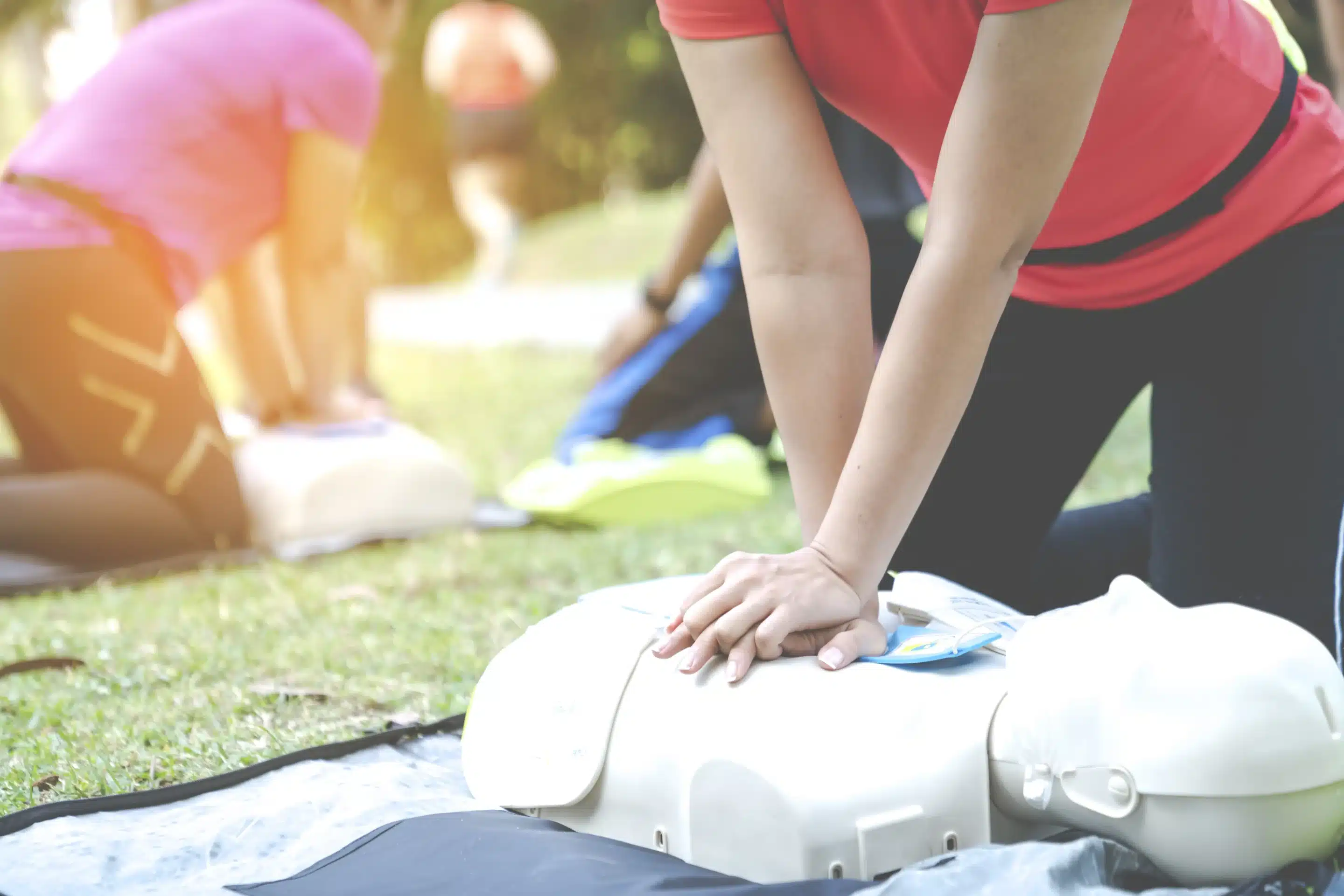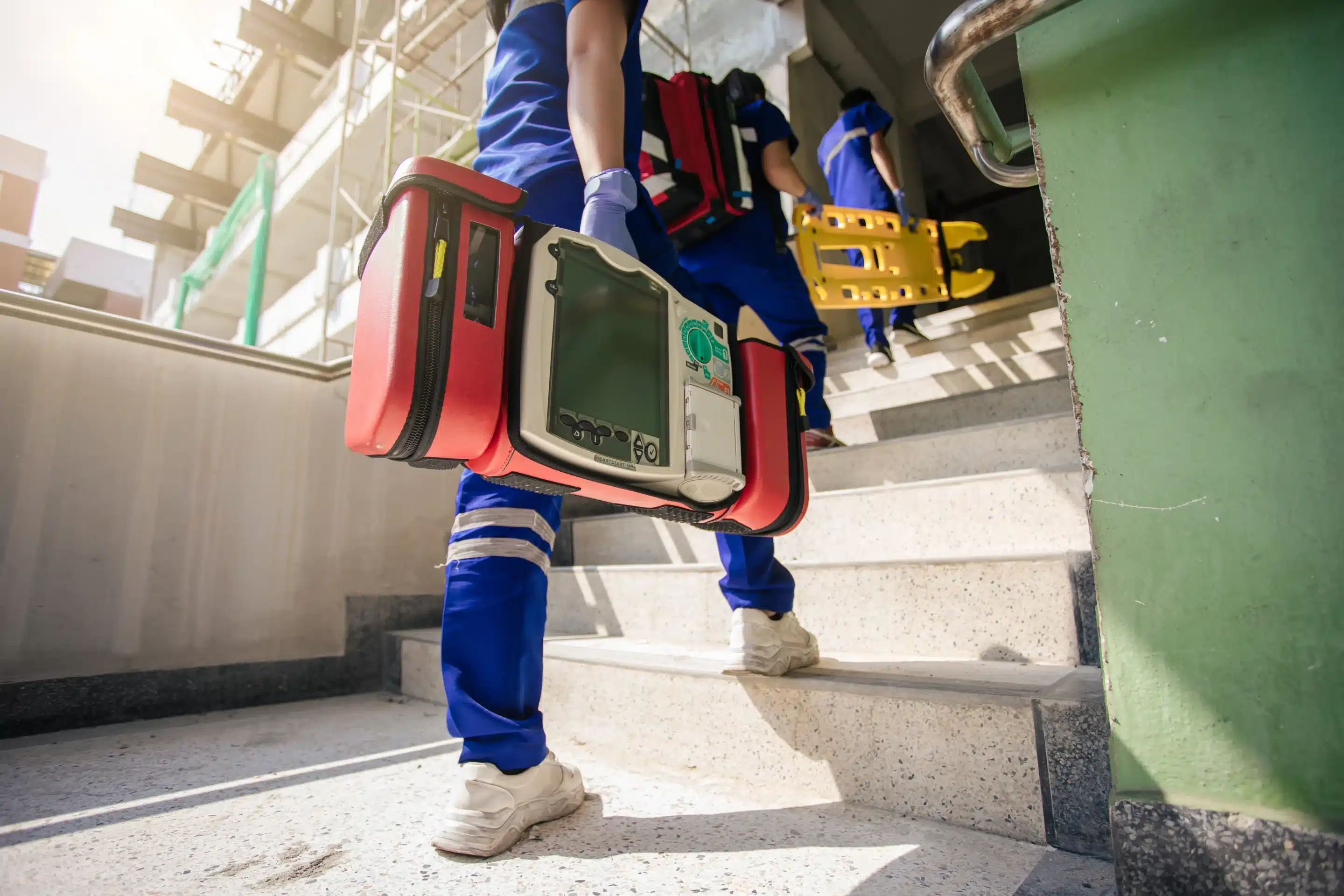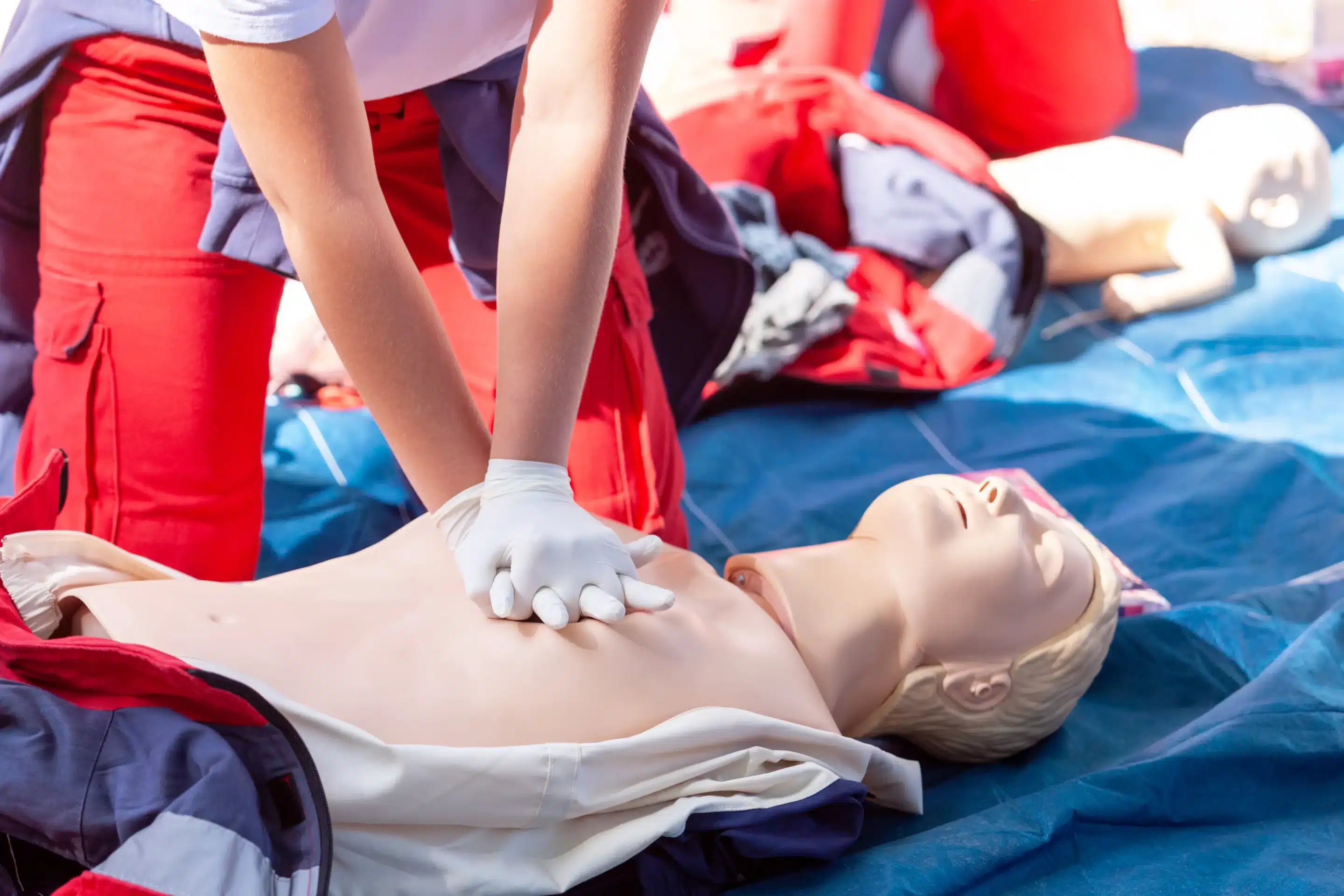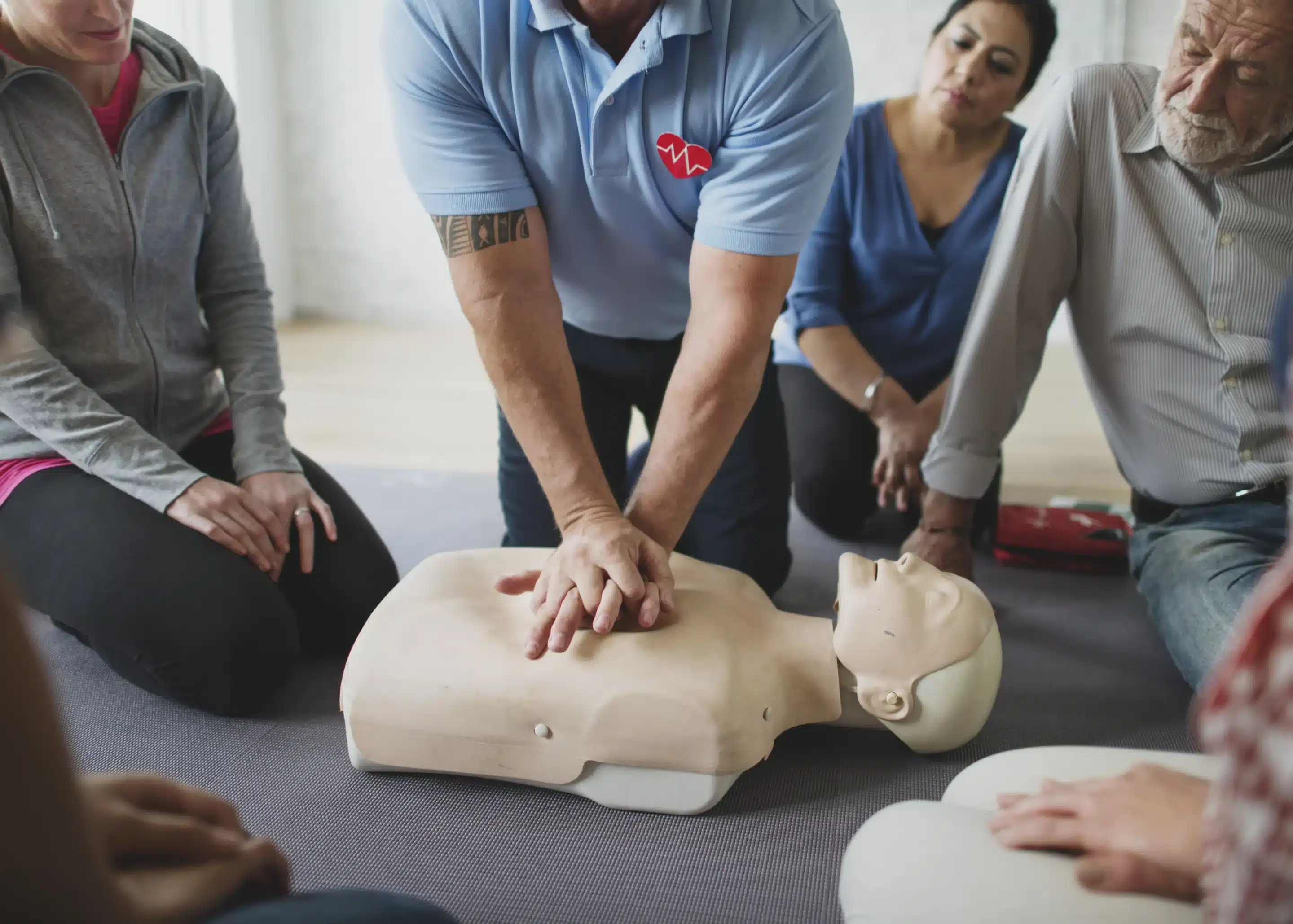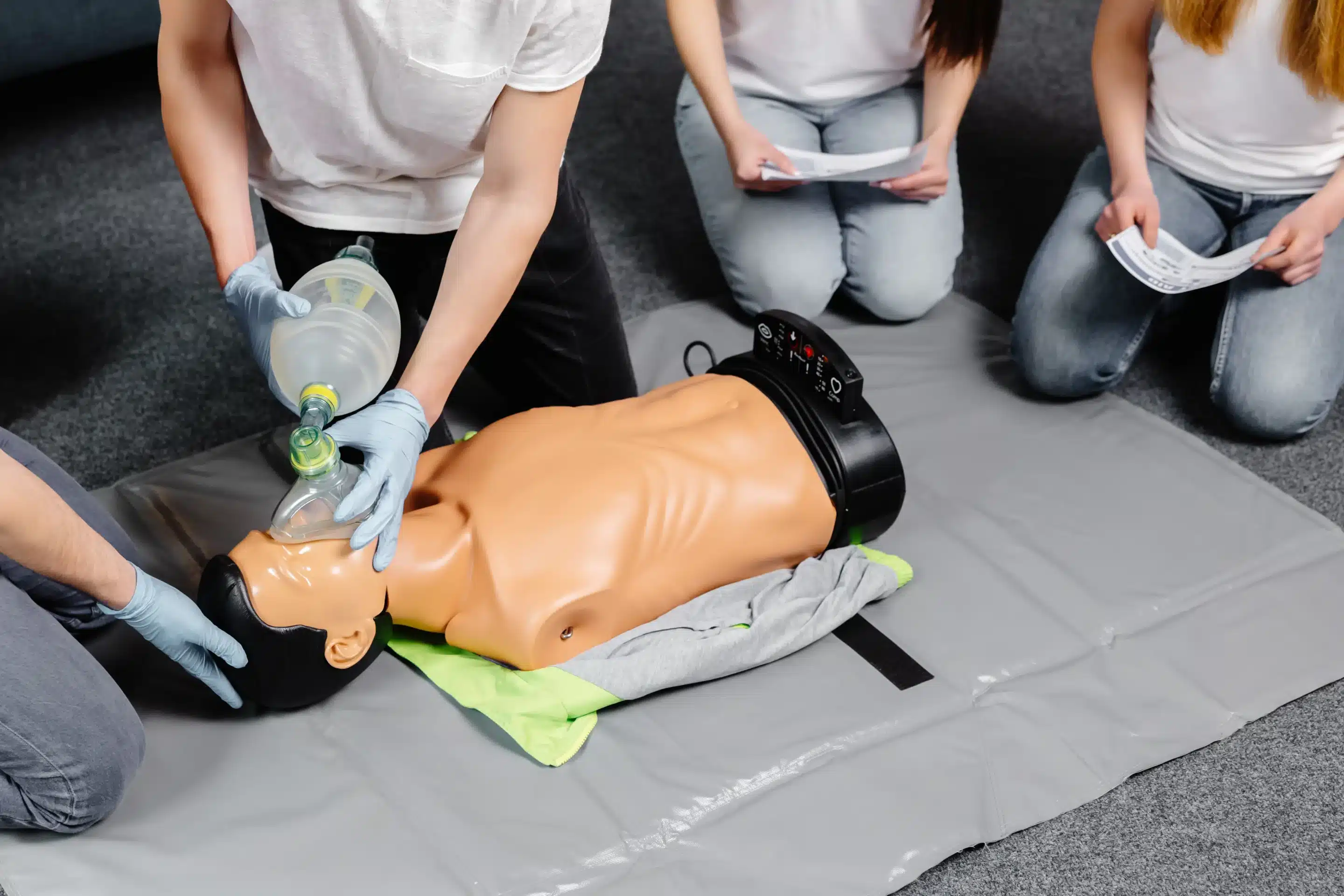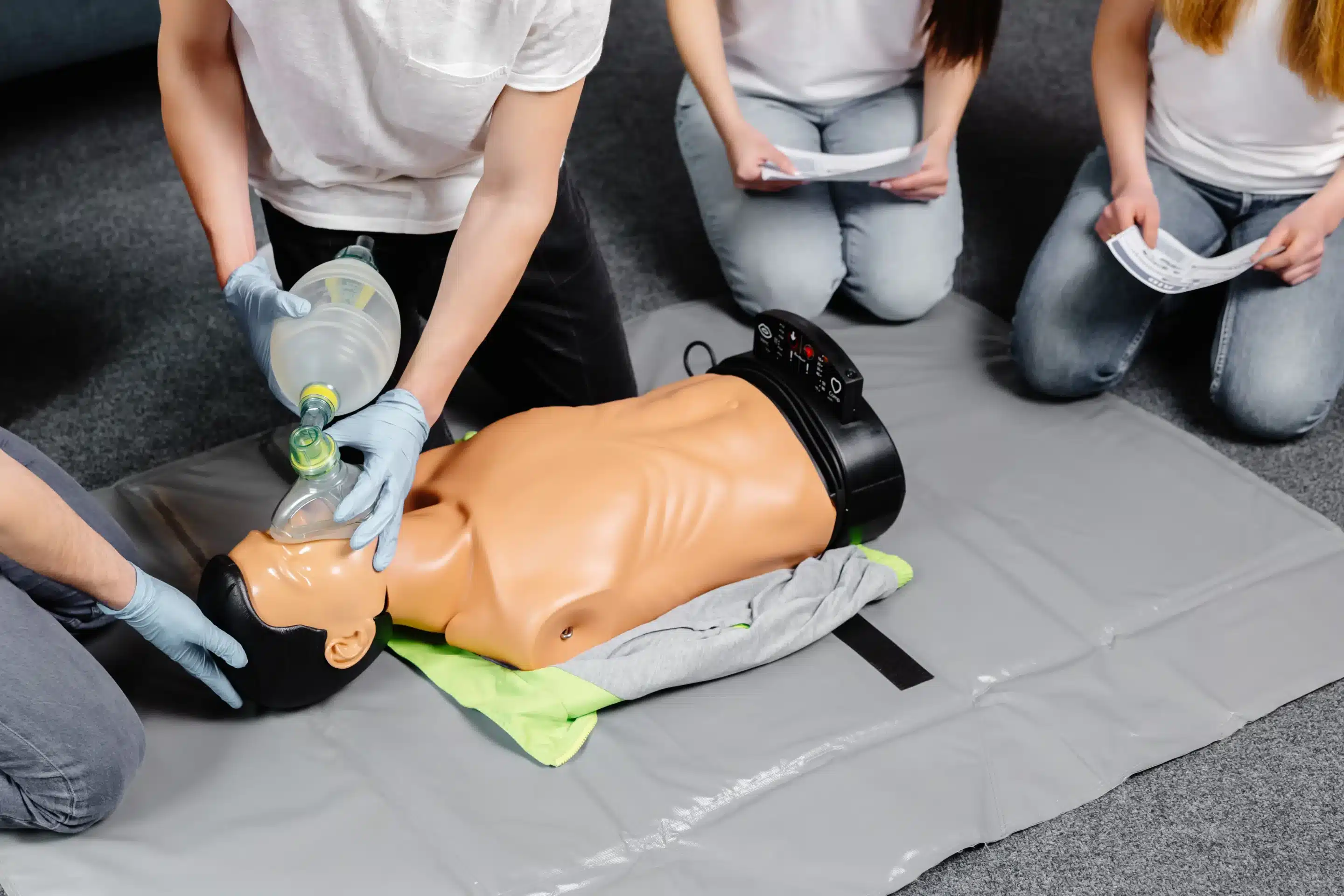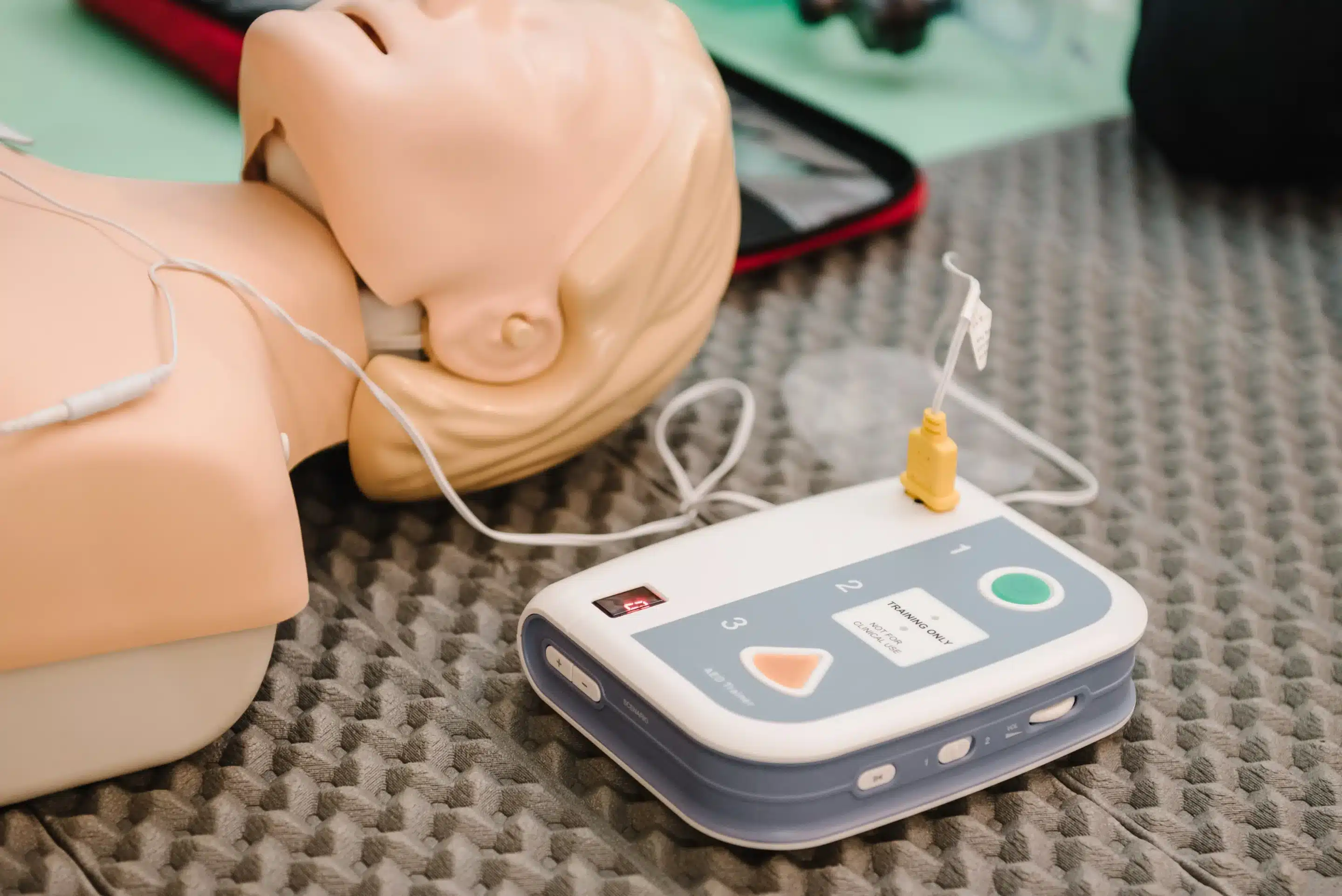In a medical emergency, seconds can matter. Having the skills to provide immediate assistance can significantly impact the outcome. Basic Life Support (BLS) certification empowers you to respond effectively in such critical situations. This guide explores the importance of BLS certification, whether you’re a healthcare professional or someone seeking to enhance their emergency preparedness. We’ll cover the essential skills taught in BLS training, the process of finding “BLS certification near me,” and the various training options available. We’ll also discuss the costs, benefits, and steps to maintain your certification. Join us as we delve into the world of BLS and discover how these life-saving skills can make a difference in your workplace and community.
Key Takeaways
- BLS certification provides essential life-saving skills: From CPR and AED use to airway management, BLS training equips you to handle medical emergencies confidently. It’s a valuable asset for healthcare professionals and anyone who wants to be prepared.
- Choosing the right BLS course is crucial: Consider factors like provider reputation, instructor experience, and available resources. Whether you prefer online, in-person, or hybrid learning, select a program that fits your needs and learning style.
- Maintaining your BLS skills requires ongoing effort: Regular practice, refresher courses, and staying updated on the latest guidelines ensure you can respond effectively in critical situations. Keep your skills sharp to make a real difference in your workplace and community.
What is BLS Certification & Why Do You Need It?
What is Basic Life Support (BLS)?
Basic Life Support (BLS) certification gives you the skills to handle medical emergencies like cardiac arrest and choking. It goes beyond standard CPR training, covering advanced techniques like using an automated external defibrillator (AED) and basic airway management. It’s a vital skill set for healthcare professionals and a valuable asset for anyone who wants to be prepared. Think of it as your emergency response toolkit. Bakersfield CPR Classes offers BLS certification courses that follow American Heart Association guidelines.
What Will You Learn in BLS Training?
BLS training builds on the basics of CPR. You’ll learn to recognize cardiac arrest, perform high-quality CPR for adults, children, and infants, and use an AED safely. The training also covers relieving choking and rescue breaths. These skills are essential for healthcare providers and anyone who might face an emergency. Our BLS classes in Bakersfield cover all these skills, preparing you to act quickly and confidently.
Why is BLS Important for Healthcare Professionals and First Responders?
BLS certification is often required for healthcare professionals and first responders. It ensures they can provide immediate care during emergencies. But BLS certification isn’t just for medical professionals; teachers, coaches, childcare providers, and anyone working with the public can benefit. Knowing how to respond in a crisis can make a difference anywhere. BLS training empowers you to handle critical situations.
Find BLS Certification Courses Near You
Finding the right BLS certification course means understanding your options, including online resources, local training centers, and nationally recognized providers. Let’s explore how to find the best fit for you.
Find Classes with Online Resources
Many organizations offer online components to their BLS certification courses. Blended learning programs, combining online instruction with in-person skills sessions, provide flexibility. The American Red Cross, for example, offers online BLS classes as part of their blended learning curriculum. This lets you study the theoretical aspects of BLS at your own pace before demonstrating your skills in person.
Where Can You Find Local BLS Training?
Locating a BLS course near you is often as simple as checking the websites of established providers. The Red Cross website lets you search for class locations and schedules by state and city. For those in Kern County, Bakersfield CPR Classes offers convenient local training. You can find a range of courses, including BLS for healthcare providers and other certifications, right here in Bakersfield.
Bakersfield CPR Classes: Your Local BLS Provider
Bakersfield CPR Classes provides comprehensive BLS certification courses designed for healthcare professionals and others seeking certification. We emphasize practical skills, up-to-date information, and the importance of maintaining skills after initial training. With a focus on immediate certification and same-day card issuance, Bakersfield CPR Classes offers a streamlined process for obtaining your BLS credentials. We serve Bakersfield and Kern County.
Top BLS Certification Providers
Several nationally recognized organizations offer high-quality BLS certification programs. Here are a few of the leading providers:
American Heart Association
The American Heart Association (AHA) is a trusted authority on CPR and emergency cardiovascular care. Their BLS courses prepare healthcare providers to respond to life-threatening emergencies.
American Red Cross
The American Red Cross offers BLS certification and renewal training for healthcare providers and first responders. Their courses cover essential life-saving techniques.
National CPR Foundation
The National CPR Foundation focuses on providing high-quality CPR and BLS training.
ProTrainings
ProTrainings offers a variety of online courses, including BLS certification.
Health & Safety Institute (HSI)
The Health & Safety Institute (HSI) provides comprehensive training programs, including BLS certification, for individuals and organizations.
BLS Training Formats
Choosing the right BLS training format depends on your learning style, schedule, and preferences. Let’s explore the most common options: in-person, online, and hybrid courses.
In-Person Classes: Hands-On Learning
In-person BLS classes offer a structured learning environment with face-to-face interaction with instructors. This format allows for real-time feedback and the opportunity to practice skills on mannequins and with classmates. The hands-on approach is invaluable for mastering essential techniques like chest compressions, rescue breaths, and using an AED. In-person training is ideal for those who thrive in a traditional classroom setting and prefer direct guidance. The American Red Cross offers BLS certification and renewal training designed for healthcare providers and first responders. This type of training ensures you can ask questions and receive immediate clarification.
Online Courses: Flexibility and Convenience
Online BLS classes offer the same comprehensive training as traditional courses but with added flexibility. You can complete the coursework at your own pace, making it easier to fit training into a busy schedule. This format often involves interactive modules, videos, and online assessments. The Red Cross online BLS classes are a great example of this flexible approach. Online certification offers similar benefits as traditional courses, with the added convenience of accessing course materials from anywhere. This format is perfect for those who prefer self-directed learning or have scheduling constraints.
Hybrid Options: Combining Theory and Practice
Hybrid BLS training programs combine online learning with in-person skills sessions. You can complete the theoretical coursework online at your convenience and then attend a hands-on session to practice. This blended approach offers a balance of flexibility and practical application. The Red Cross also offers hybrid learning options for BLS certification. This format ensures you receive comprehensive training while accommodating different learning styles. The Red Cross emphasizes practical skills and up-to-date information, ensuring participants are prepared for emergency situations. Hybrid courses are a great choice for those who want the convenience of online learning combined with hands-on practice.
How Much Does BLS Certification Cost & What Are the Benefits?
Knowing the cost and benefits of BLS Certification helps you make informed decisions about your training. Let’s break down the expenses and explore the advantages.
Average BLS Course Costs
BLS certification courses typically range from $75 to $150. Several factors influence the final price, so comparing options is always smart. You can explore affordable BLS courses in Bakersfield through our training center.
Factors Affecting Course Costs
Several things can affect a BLS course’s cost. A well-known provider like the American Heart Association sometimes has slightly higher prices, reflecting their established reputation. Location matters too. Courses in bigger cities might be pricier than those in smaller towns. The course format also plays a role: in-person classes often cost a bit more than online options because of facility and instructor fees. Finally, double-check whether materials like textbooks and certification cards are included or are an extra expense.
Potential Discounts and Financial Assistance
Look for potential discounts! Many providers offer reduced rates for groups, students, or healthcare professionals. Some employers cover the cost of BLS certification as part of professional development, so checking with your HR department is worthwhile. Don’t hesitate to ask about financial assistance when researching courses.
Long-Term Benefits of BLS Certification
Getting BLS certified isn’t just about checking a box—it’s an investment in your future. This certification can open doors to more job opportunities, especially in healthcare and emergency response. Beyond that, it gives you the confidence to handle emergencies effectively, knowing you have the skills to potentially save a life. For healthcare professionals, maintaining your BLS certification is often essential for meeting industry standards and regulations. It demonstrates your commitment to providing high-quality care.
Get BLS Certified: Steps From Registration to Completion
This section outlines the process of obtaining your BLS certification, from initial enrollment to receiving your certification card. We’ll cover everything you need to know to feel prepared and confident.
How to Enroll in a BLS Course
Finding the right BLS course is the first step. Several organizations offer BLS certification, including the American Red Cross and the American Heart Association. Start by searching online for “BLS classes near me” or checking directly with these organizations. Many hospitals and healthcare systems also offer BLS courses for their employees and the community. Once you’ve found a course that fits your schedule and location, you can typically register online. The registration process usually involves providing your personal information, selecting a class date, and paying the course fee. Bakersfield CPR Classes offers a variety of convenient class times, so check our schedule and sign up today.
What to Expect During Training
BLS courses combine classroom instruction with hands-on practice. You’ll learn essential life-saving skills, including CPR, using an automated external defibrillator (AED), and providing first aid for choking victims. The curriculum also covers recognizing the signs of a heart attack or stroke and how to respond effectively in various emergency situations. Expect to actively participate in demonstrations and practice scenarios. This hands-on training is crucial for building muscle memory and confidence in your abilities. The American Red Cross emphasizes practical skills and up-to-date information.
Certification Exam and Card Issuance
After completing the training portion of the course, you’ll need to pass a written exam and a practical skills test. The written exam assesses your understanding of BLS principles and procedures, while the practical test evaluates your ability to perform the skills you’ve learned. Upon successful completion of both, you’ll receive your BLS certification card. This card is proof of your qualification and is typically valid for two years. Remember to keep your certification card in a safe place and track its expiration date so you can renew it on time. The Red Cross offers convenient renewal courses.
Maintain Your BLS Certification
Keeping your BLS skills sharp is crucial for providing effective care in emergencies. This section covers how long your certification lasts, how to renew, and tips for staying current.
How Long is BLS Certification Valid?
BLS certification is valid for two years. This timeframe ensures that healthcare providers and other certified individuals refresh their knowledge and skills regularly. Plan to register for a renewal course before your certification expires to avoid any gaps in your credentials. Check with your employer or certifying organization, like the American Heart Association, for specific renewal requirements.
How to Renew Your BLS Certification
Renewing your BLS certification is straightforward. Many organizations, including the American Red Cross, offer renewal courses for those within 30 days of their expiration date, allowing you to maintain your certification without disrupting your work schedule. Some providers also offer online renewal options for added convenience. Bakersfield CPR Classes can help you find a renewal course that fits your needs and schedule.
Stay Current with BLS Skills
Even with a valid certification, regular practice is essential. The Red Cross emphasizes the importance of maintaining skills after initial training. Consider incorporating BLS practice into your workplace training or personal routine. This could involve reviewing key procedures, practicing with colleagues, or using online resources. Staying proficient in BLS ensures you’re always prepared to respond confidently and effectively in critical situations.
Choose the Right BLS Course Provider
Picking the right BLS course provider is key to getting a solid education and credible certification. Here’s what to consider:
Accreditation and Reputation
First and foremost, look for a training center with proper accreditation and a strong reputation. This ensures the training aligns with established standards and is recognized by employers and other organizations. Check if the provider is affiliated with a nationally recognized organization like the American Heart Association or the American Red Cross. Reading reviews and testimonials from past students can also give you valuable insights into the quality of training. A provider with a good track record demonstrates a commitment to delivering effective BLS instruction.
Instructor Qualifications
The quality of your BLS training depends heavily on the instructors. Experienced and certified instructors can effectively teach these essential resuscitation skills, ensuring you’re prepared for real-life emergencies. Inquire about the instructors’ credentials and experience in the field. Look for instructors who are not only knowledgeable but also passionate about teaching and dedicated to student success. A qualified instructor can make all the difference in your learning experience.
Course Materials and Resources
Comprehensive course materials and resources are essential for effective learning. A good BLS course provider should offer up-to-date materials that cover all the key concepts and techniques. Online resources, such as digital manuals, videos, and practice quizzes, can enhance your learning and allow you to review the material at your own pace. Flexible access to these resources is important for accommodating different learning styles and schedules. Check with the provider about the types of materials they offer and whether they include online access.
Student Support Services
A supportive learning environment can significantly impact your success in BLS certification. Look for providers that offer student support services, such as access to instructors for questions and clarification, and technical assistance if needed. A responsive support system can help you overcome challenges, stay motivated, and complete your certification journey with confidence.
BLS Certification for Specific Professions
BLS certification equips individuals with the skills to respond effectively to medical emergencies. While crucial for healthcare professionals, it’s also valuable for various other professions. Let’s explore why BLS certification is important for specific career paths.
Healthcare Providers
For healthcare providers like doctors, nurses, and paramedics, BLS certification is essential. It provides the foundational skills necessary to deliver immediate care during life-threatening situations. From performing CPR and using an AED to managing airways, BLS-certified professionals are prepared to stabilize patients until advanced medical help arrives. These critical skills are vital in hospitals, clinics, and emergency medical services. BLS certification ensures healthcare providers can confidently respond to cardiac arrest, respiratory distress, and other emergencies, ultimately improving patient outcomes.
Childcare Workers
Early childhood educators, nannies, and other childcare providers are entrusted with the safety and well-being of young children. For these professionals, BLS certification offers invaluable skills to respond to emergencies involving infants and children. Whether it’s a choking incident, a near-drowning experience, or a sudden cardiac event, BLS training empowers childcare providers to act quickly and confidently. Knowing how to perform CPR on infants and children can be life-saving. BLS certification provides peace of mind for parents and creates a safer environment for children in their care.
First Responders and Public Safety Personnel
Police officers, firefighters, and other first responders are often the first to arrive at the scene of an emergency. BLS certification is a crucial component of their training, enabling them to provide immediate medical assistance before paramedics arrive. Equipping first responders with BLS skills enhances their ability to manage medical crises effectively, potentially saving lives in critical situations. Whether responding to a car accident, a natural disaster, or a medical emergency in a public setting, BLS-certified first responders play a vital role in stabilizing individuals and providing essential care.
Fitness Professionals and Coaches
Fitness trainers, coaches, and other fitness professionals often work with individuals who may experience medical emergencies during physical activity. BLS certification provides these professionals with the skills to respond to sudden cardiac arrest, breathing difficulties, or other medical events that may occur during exercise. Having trained professionals who can administer CPR and provide basic life support can significantly improve outcomes in these situations. BLS certification demonstrates a commitment to safety and preparedness, creating a more secure environment for clients and athletes.
Use BLS Skills in Your Workplace and Community
Knowing BLS can make a real difference in your workplace and community. It empowers you to respond effectively during emergencies, creating a safer environment for everyone. Here’s how to put those skills to good use:
Create a Culture of Preparedness
Basic Life Support (BLS) training isn’t just for healthcare professionals—it’s a valuable skill for everyone. Think of BLS as a shared responsibility. Equipping your team with BLS skills creates a safety net, ensuring someone is prepared to act quickly during a medical crisis. This includes knowing how to use an AED, managing airways, and helping someone who is choking. By fostering a culture of preparedness, you’re not just training individuals, you’re building a more resilient and responsive community. Consider offering BLS training as part of your workplace onboarding or community outreach programs.
Schedule Regular Drills and Refresher Training
Regular drills and refresher courses are key to maintaining proficiency in BLS. Like any skill, BLS requires practice. Refresher training reinforces essential techniques and keeps your team prepared for real-life emergencies. These sessions also offer a chance to address any questions or concerns, ensuring everyone feels confident in their abilities. For a range of professionals, from teachers and coaches to paramedics and EMTs, regular practice is essential for confident and effective emergency response. Check with your local training provider, like Bakersfield CPR Courses, for available refresher courses.
Maintain Equipment and Ensure Accessibility
Having the right equipment readily available is just as important as the training itself. Make sure AEDs are easily accessible and regularly inspected. Check that first-aid kits are fully stocked and up-to-date. Easy access to these resources can significantly impact the outcome of an emergency. Knowing how to use an AED and perform CPR are crucial skills in any emergency situation. By prioritizing equipment maintenance and accessibility, you’re demonstrating a commitment to safety and preparedness. Review the American Heart Association’s guidelines for CPR and AED usage to ensure your equipment and practices are current.
Common Questions About BLS Certification
This section answers some of the most frequently asked questions about BLS certification. We’ll cover the differences between BLS and CPR, discuss online versus in-person training, and look at how employers view these certifications.
BLS vs. CPR: What’s the Difference?
CPR (Cardiopulmonary Resuscitation) teaches the basics of chest compressions, rescue breaths, and AED use. BLS (Basic Life Support) certification covers similar life-saving techniques but goes further. It includes team dynamics, bag-mask techniques, and advanced airway management. BLS certification is designed for healthcare providers, like doctors, nurses, paramedics, and other first responders. It meets specific requirements these professionals need for licensing and demonstrates a higher level of competency. CPR training is valuable for anyone, while BLS certification is geared towards healthcare professionals.
Online vs. In-Person Certification
Both online and in-person BLS certification courses offer valuable training. In-person classes provide hands-on learning and direct interaction with instructors. This allows for immediate feedback and personalized guidance. Online courses offer flexibility, allowing you to learn at your own pace and review materials as needed. This can be particularly helpful for those with busy schedules. Some organizations offer blended learning, combining online coursework with in-person skills sessions. This approach gives you the benefits of both formats. Bakersfield CPR Classes offers a variety of course formats to fit your learning style and schedule.
Employer Recognition of Certifications
Most healthcare facilities require their employees to hold a current BLS certification. It’s a good idea to check with your employer to ensure they accept certifications from your chosen provider. Whether you choose online or in-person training, BLS certification demonstrates your commitment to patient safety and high-quality care. It’s a valuable asset for career advancement and shows your dedication to maintaining essential lifesaving skills. Contact Bakersfield CPR Classes to learn more about our certification options.
Related Articles
- BLS Courses in Bakersfield: The Ultimate Guide – Bakersfield CPR Classes
- BLS Classes Near Me: A Practical Guide – Bakersfield CPR Classes
- BLS Training Near Me: Your Complete Guide – Bakersfield CPR Classes
- BLS for Healthcare Providers in Rosedale: A Guide – Bakersfield CPR Classes
- BLS Renewal Near Me: Your Complete Guide – Bakersfield CPR Classes
Frequently Asked Questions
Is BLS certification difficult to obtain?
The BLS course is designed to be manageable for people of varying backgrounds. It focuses on practical skills and emphasizes hands-on training. While challenging, the material is presented clearly, and instructors provide ample support. Don’t feel intimidated! The goal is to equip you with life-saving skills, and the training process is designed to help you succeed.
How often do I need to renew my BLS certification?
BLS certification is typically valid for two years. Renewing ensures your skills and knowledge are up-to-date with the latest guidelines. Check with your employer or the organization that issued your certification for specific renewal requirements. Setting reminders on your phone or calendar can help you stay on track.
What if I don’t work in healthcare? Is BLS still relevant for me?
Absolutely! While BLS is essential for healthcare professionals, it’s a valuable skill set for anyone. From teachers and coaches to parents and childcare providers, knowing BLS can make you a vital resource in your community. It empowers you to respond effectively in emergencies, potentially saving a life.
What’s the difference between online and in-person BLS classes?
Both online and in-person BLS classes cover the same core material. Online classes offer flexibility, allowing you to learn at your own pace. In-person classes provide a structured environment with direct interaction with instructors and hands-on practice. Consider your learning style and schedule when choosing the format that suits you best. Some providers offer hybrid courses that combine online learning with in-person skills sessions.
How do I choose the right BLS course provider?
Look for providers with accreditation from reputable organizations like the American Heart Association or the American Red Cross. Check instructor qualifications, course materials, and available student support services. Reading reviews and testimonials can also give you valuable insights into the quality of training offered by different providers.


